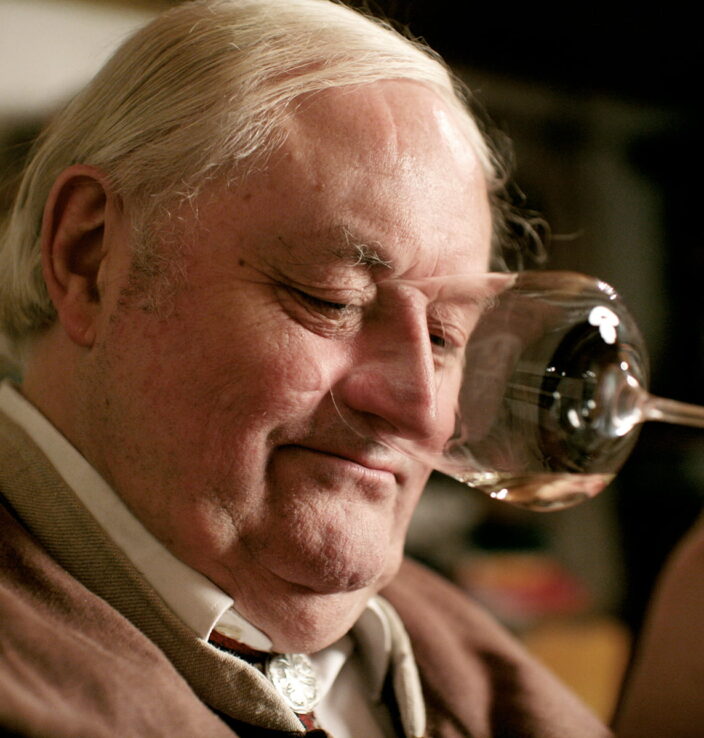Denk’Art


Born not on the drawing board or in a computer program but out of a vision deeply rooted in the wine regions. It is not for nothing that winemakers around the world appreciate
the honesty and precision of the Denk‘ART glasses, like a high-end loudspeaker. Conceived by a wine lover – with a devotion and humility before wine – for wine lovers.

Appreciation for wine
The glass should not change the wine, but rather show and reproduce what is there perfectly in all its complexity.
As the winemaker strives to optimally reflect the terroir and the production of the vintage in the vineyard plus to preserve the essence of it unadulterated in the cellar, the aim of the glasses as the last link in the chain is to show the all the wine’s facets in detail. A glass cannot work miracles and yet it is the last detail, having direct contact with the wine connoisseur. It shouldn’t gloss over anything, yet should emphasize the character of the wine without make-up while supporting the enjoyment.
Like a magnifying glass, a good glass reveals great wines in detail and works out the nuances in a multi-layered, intensive manner, also showing any downfalls just as relentlessly.
In our opinion, wine should be the focus of wine enjoyment without restriction. The glass should therefore be in the background. The wine is the star for us. The delicacy of the glass is intended to convey the feeling that there is nothing between you and the wine. Floating perfection is our maxim. As little as possible, as much as necessary. Unobtrusive is the goal, taking in all the senses.
Sight: The first glance already reveals the harmony of a perfectly shaped bowl with balanced proportions for maximum transparency. The glass sets the scene for the wine, not itself. The wine’s colour is allowed to shine.


Archetypes
Our glasses were not designed for specific grape varieties or growing regions, but according to the predominant aromas and flavours that are decisive for the smell and taste of a given wine. Often factors from vineyard management, or choices made by the winemaker in the cellar, influence the expression of substances such as tannins, phenols and fruit esters that determine aroma and taste. They also influence the choice of the appropriate glass for each wine.
For some wines, many professionals often prefer glasses other than those intended for the grape variety. For example, you might choose the Burgundy bowl for fine Syrah from the northern Rhône or the Bordeaux glass for a more powerful Shiraz from Australia rather than using a dedicated Syrah glass for both.
In general, with our deliberately short range of glasses, we try to highlight the entire spectrum of aromas of the most diverse wines and spirits, without patronizing the drink connoisseur through type-specificity. It is therefore definitely worth tasting the same wine from our different glasses and finding the best combination for you.


Straight sidewalls
Right from the start, with the conception of the first prototypes, the basic shape of the bowls was based on straight side walls. Our conviction matured to implement this concept uncompromisingly, combined with balanced curves at the respective bend, as this promised a precise display of the aromas in tastings. We attribute this to the immediate, direct connection of a straight line that should not alter aromas. You will also find an interesting article on this subject in the Decanter magazine, which deals with the differences between straight side walls and the classic oval shape. While the classic shape tends to integrate and round off aromas and the primary fruit appears superficially, the straight shape of our glasses shows a more detailed range of aromas, which is less forgiving of the smallest errors, but gives secondary aromas and minerality more expression. In line with our principle, to transport the wine in the glass as true to the detail as possible.
Indulging all five senses
Sight: The first glance already reveals the harmony of a perfectly shaped bowl with balanced proportions for maximum transparency. The glass sets the scene for the wine, not itself. The wine’s colour is allowed to shine.
Touch: The haptic properties essentially determine the quality of a wine glass: the wafer-thin body, the bowl smoothly sanded on the upper edge and without a rim. The stem falls delicately and at the same time feels firmly in the hand. The glass vibrates: proof that all parts are mouth-blown.
Hearing: The pleasant sound of fine glasses is an important, even sensual part of enjoying wine. Toast heartily with the Denk’Art glasses from Zalto. You needn’t be shy.


Smell: This is most important function of a high-quality glass. When swirled, myriads of aromatic substances are released. How they reach the olfactory nerves, which of them are emphasized and which remain mute, all depends on the shape of the bowl. A large surface area favours the exchange with oxygen. Towards the top, the body tapers like a chimney, but in a slightly different way for each type of wine. That is why there is the right Zalto glass for every wine.
Taste: The tongue perceives the different taste components in different places. The design of the glass can influence the extent to which the tastebuds are stimulated by sweet, sour, salt, bitter and umami. A wide bowl lets the wine flow backwards, a narrow goblet wets the tip of the tongue first. The glass defines the intensity of the fruit, the acidity, the tannin – from the first sip to the last.
